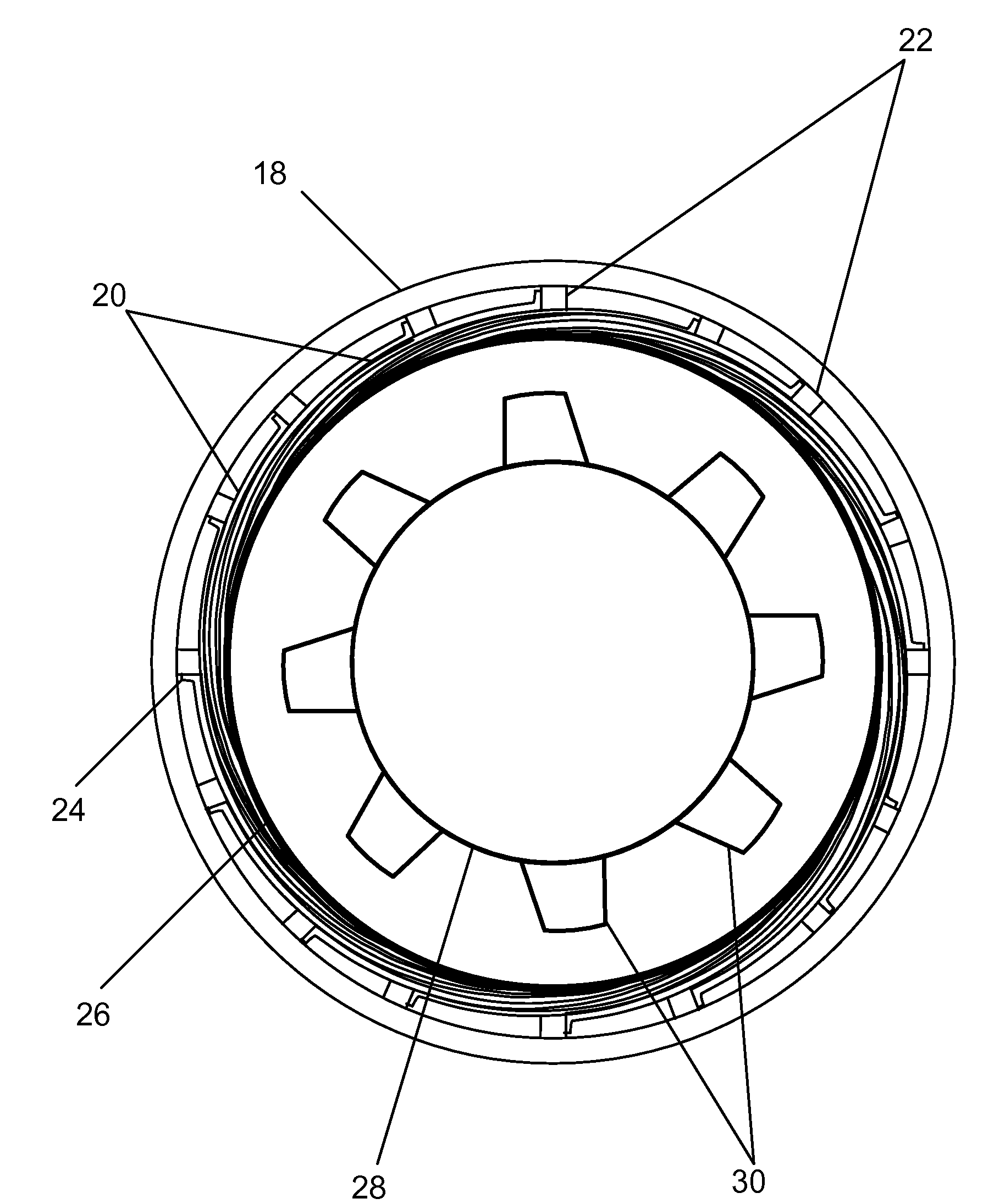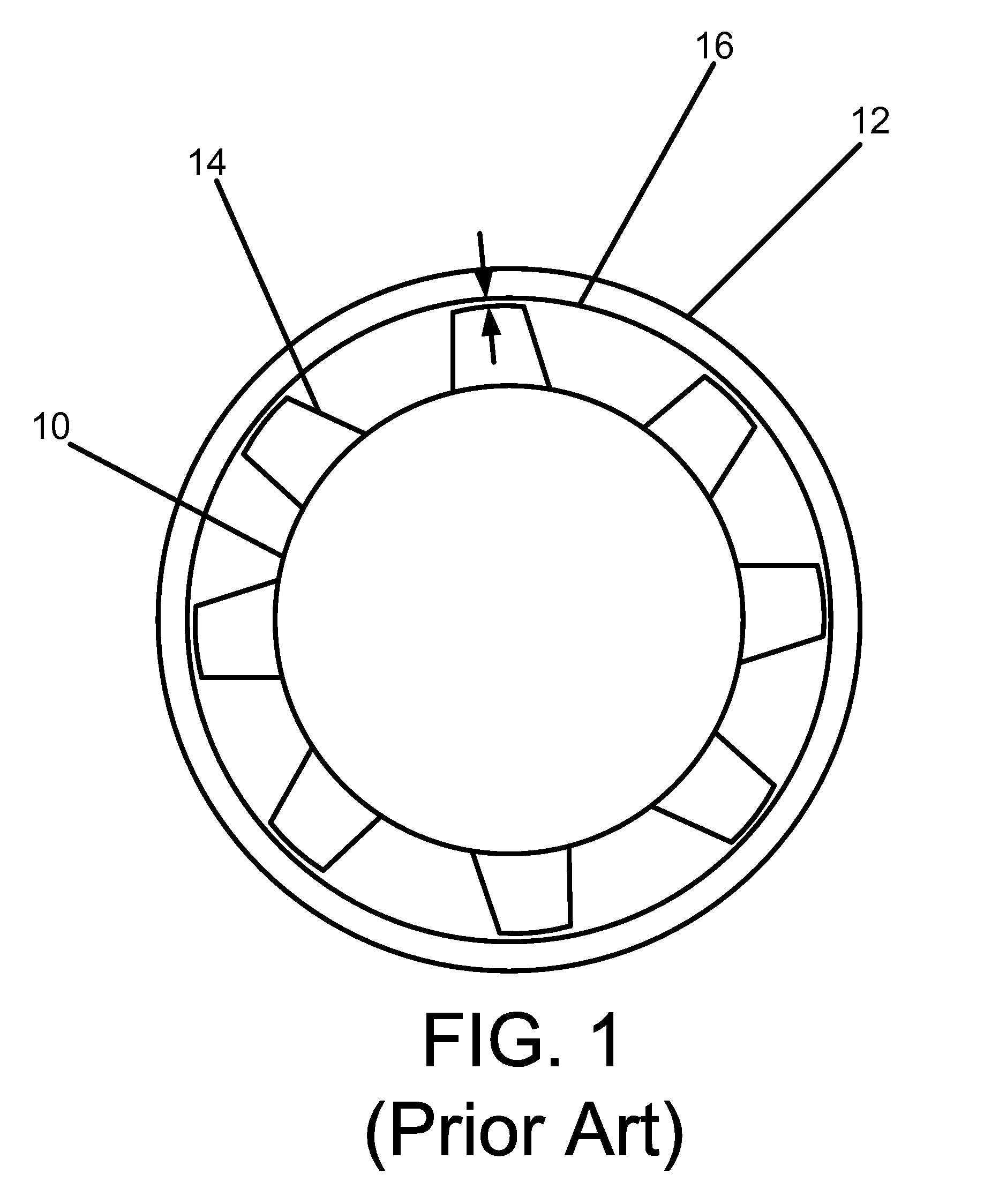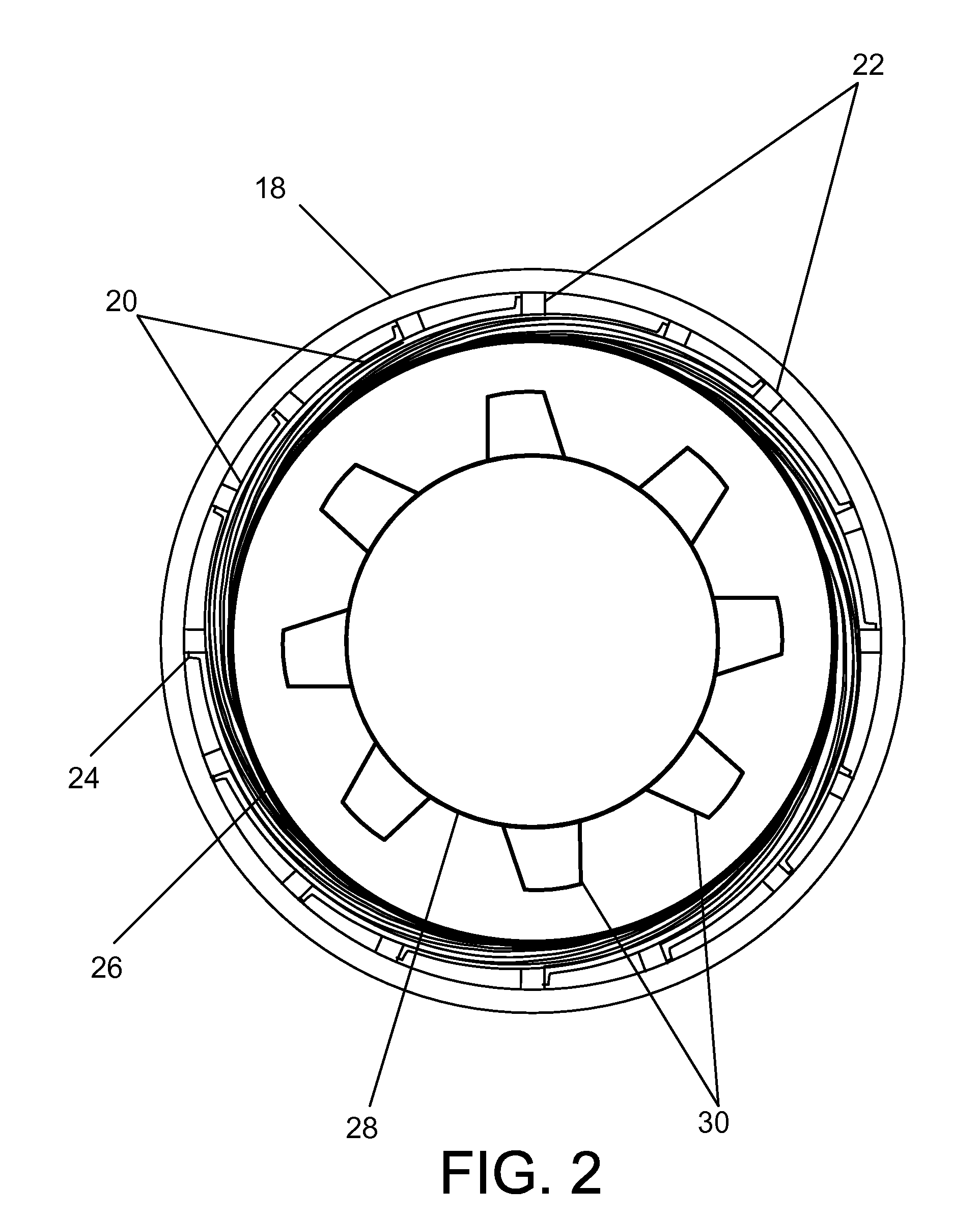Stator Casing Having Improved Running Clearances Under Thermal Load
a technology of thermal load and stator, which is applied in the direction of machines/engines, stators, liquid fuel engines, etc., can solve the problems of reducing the efficiency of the engine, the contact between the rotor and the stator the thermal response rate mismatch is the most severe, so as to improve the efficiency of the gas turbine engine and reduce the inner diameter of the shroud
- Summary
- Abstract
- Description
- Claims
- Application Information
AI Technical Summary
Benefits of technology
Problems solved by technology
Method used
Image
Examples
Embodiment Construction
[0019]FIG. 1 is a depiction of a simplified rotor situated within a stator casing. The rotor 10 includes a plurality of blades 14 which are circumferentially situated about the rotor 10. The blades 14 extend in a radial direction from the axis of rotation of the rotor 10 toward the inner surface 16 of the casing of the stator 12. The portion of the blade 14 closest to the inner surface 16 is referred to as the “tip.” The clearance between the blade 14 and the inner surface 16 is illustrated by the arrows in FIG. 1. As explained previously, the greatest efficiency is achieved when operating at minimal clearance. This clearance changes as the turbine undergoes transient operations because of the differing thermal response rates of the stator 12 and the rotor 10.
[0020]Once a turbine is fired, rotation of the rotor 10 causes mechanical deflection of the blades 14 as rotational forces pull the blades 14 towards the inner surface 16. As thermal loads are applied, the rotor 10 and the stat...
PUM
 Login to View More
Login to View More Abstract
Description
Claims
Application Information
 Login to View More
Login to View More - R&D
- Intellectual Property
- Life Sciences
- Materials
- Tech Scout
- Unparalleled Data Quality
- Higher Quality Content
- 60% Fewer Hallucinations
Browse by: Latest US Patents, China's latest patents, Technical Efficacy Thesaurus, Application Domain, Technology Topic, Popular Technical Reports.
© 2025 PatSnap. All rights reserved.Legal|Privacy policy|Modern Slavery Act Transparency Statement|Sitemap|About US| Contact US: help@patsnap.com



